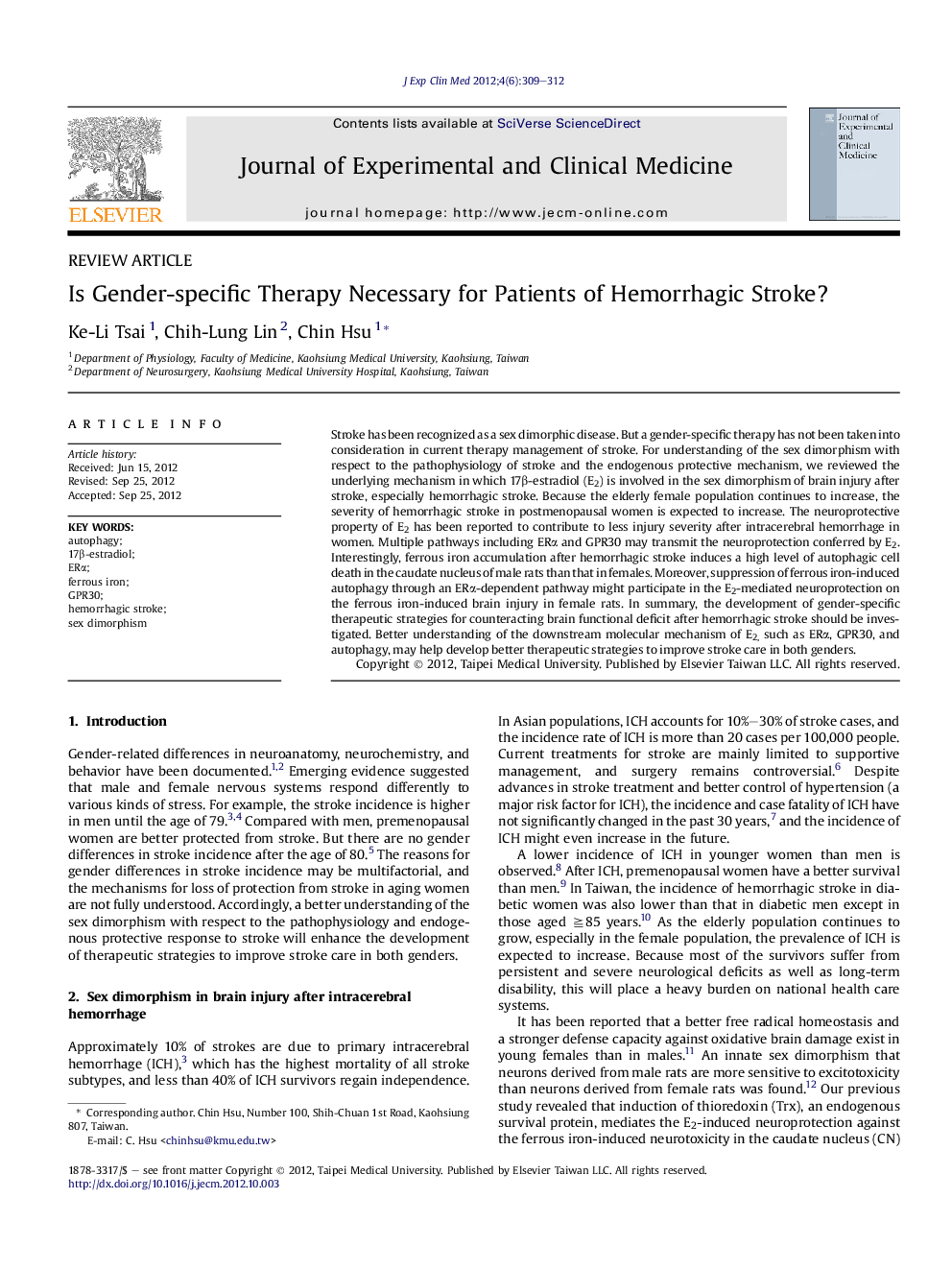| Article ID | Journal | Published Year | Pages | File Type |
|---|---|---|---|---|
| 3477902 | Journal of Experimental & Clinical Medicine | 2012 | 4 Pages |
Stroke has been recognized as a sex dimorphic disease. But a gender-specific therapy has not been taken into consideration in current therapy management of stroke. For understanding of the sex dimorphism with respect to the pathophysiology of stroke and the endogenous protective mechanism, we reviewed the underlying mechanism in which 17β-estradiol (E2) is involved in the sex dimorphism of brain injury after stroke, especially hemorrhagic stroke. Because the elderly female population continues to increase, the severity of hemorrhagic stroke in postmenopausal women is expected to increase. The neuroprotective property of E2 has been reported to contribute to less injury severity after intracerebral hemorrhage in women. Multiple pathways including ERα and GPR30 may transmit the neuroprotection conferred by E2. Interestingly, ferrous iron accumulation after hemorrhagic stroke induces a high level of autophagic cell death in the caudate nucleus of male rats than that in females. Moreover, suppression of ferrous iron-induced autophagy through an ERα-dependent pathway might participate in the E2-mediated neuroprotection on the ferrous iron-induced brain injury in female rats. In summary, the development of gender-specific therapeutic strategies for counteracting brain functional deficit after hemorrhagic stroke should be investigated. Better understanding of the downstream molecular mechanism of E2, such as ERα, GPR30, and autophagy, may help develop better therapeutic strategies to improve stroke care in both genders.
